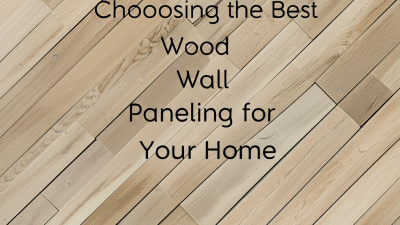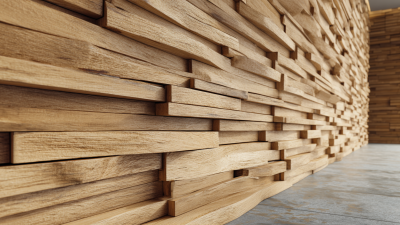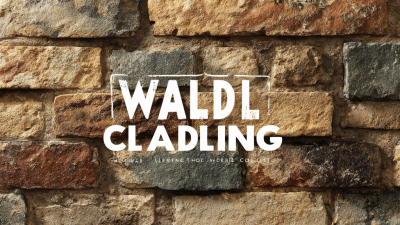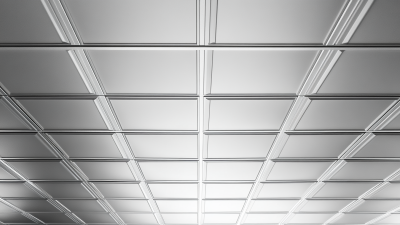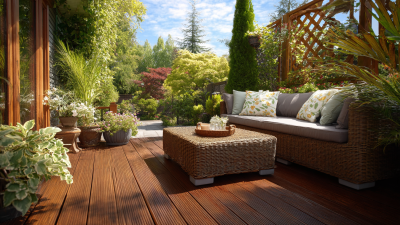In recent years, the popularity of WPC Wall Panels has soared, transforming the landscape of modern interior design. According to a report by Allied Market Research, the global WPC market is projected to reach $7.91 billion by 2026, with a compound annual growth rate (CAGR) of 10.4% from 2019 to 2026. This remarkable growth can be attributed to the numerous advantages these panels offer, including enhanced durability, water resistance, and eco-friendliness. WPC Wall Panels not only provide aesthetic appeal but also contribute to cost-effective solutions for homeowners and designers alike. As the trend towards sustainable and functional building materials continues to rise, embracing WPC Wall Panels is becoming increasingly essential for those looking to elevate their interior spaces while meeting contemporary sustainability standards.

WPC (Wood Plastic Composite) wall panels have emerged as a popular choice for modern interiors, thanks to their impressive durability and aesthetic appeal. Unlike traditional wooden panels, WPC panels are engineered to withstand the rigors of contemporary living. They are resistant to moisture, which makes them an excellent option for areas prone to humidity, such as kitchens and bathrooms. Additionally, their composition minimizes the risk of warping and splitting, ensuring that the panels maintain their integrity over time.
In terms of maintenance, WPC wall panels stand out as a low-effort solution for homeowners and designers alike. They do not require regular treatments like wood, and a simple wipe-down is often enough to keep them looking new. The surface of WPC panels is designed to resist stains and scratches, which is vital for busy households or commercial spaces. With a range of colors and textures available, WPC wall panels can seamlessly integrate into any contemporary design, offering both function and elegance to modern interiors.
| Feature | Description | Benefits | Durability Rating (1-10) |
|---|---|---|---|
| Moisture Resistance | WPC materials are impervious to moisture, preventing warping. | Ideal for high humidity areas like kitchens and bathrooms. | 9 |
| Impact Resistance | Withstands significant force without denting or breaking. | Low maintenance and longer lifespan. | 8 |
| Termite Resistance | Manufactured to be resistant to termites and other pests. | Protects structural integrity over time. | 10 |
| UV Resistance | Designed to resist fading and degradation from UV exposure. | Maintains aesthetic appeal over time. | 9 |
| Thermal Insulation | Provides good insulation properties. | Energy-efficient option for modern homes. | 7 |
WPC (Wood Plastic Composite) wall panels are revolutionizing the way we think about interior design. Known for their aesthetic versatility, these panels come in a wide range of colors, textures, and finishes that can complement any modern interior theme. According to a report from MarketsandMarkets, the global WPC market is projected to reach USD 9.2 billion by 2027, demonstrating a growing popularity in both residential and commercial spaces. This trend is largely attributed to the combination of durability and elegance that WPC panels offer, making them an attractive choice for environmentally conscious consumers seeking beautiful design solutions.
When considering WPC wall panels, it's essential to choose the right options that align with your interior goals. For a contemporary look, opt for panels with a matte finish and neutral tones that blend seamlessly with modern furnishings. Alternatively, if you aim for a rustic charm, select textured panels that evoke a natural wood feel. Tip: Always check for weather resistance and ease of maintenance in your chosen WPC panels to ensure they maintain their appeal over time.
Combining design with functionality, WPC panels are also eco-friendly, as they reduce the need for traditional wood and contribute to sustainable building practices. Tip: For an unexpected touch, consider layering different panel styles to create a striking feature wall that adds depth and interest to your space. With endless versatility, WPC wall panels are poised to enhance the aesthetic appeal of contemporary interiors while supporting sustainability.
WPC (Wood Plastic Composite) wall panels are rapidly gaining popularity in modern interiors, not only for their aesthetic appeal but also for their sustainable and eco-friendly characteristics. Made from a blend of recycled wood fibers and plastic, WPC wall panels significantly reduce the reliance on traditional timber, thereby helping to preserve our forests. This innovative material is a perfect solution for environmentally conscious homeowners who want to create stylish spaces without compromising on sustainability.
When considering WPC wall panels for your interior design, keep in mind these helpful tips: First, choose products that are certified for sustainability, ensuring they meet high environmental standards. Second, take advantage of WPC’s versatility; it can be used in various settings, from accent walls to full room applications, allowing you to unleash your creativity. Finally, maintain your panels with simple cleaning routines to extend their lifespan, contributing to a more sustainable living space.
In addition to their eco-friendly credentials, WPC wall panels offer practical benefits such as resistance to moisture, mold, and insects. This makes them an excellent choice for areas prone to humidity, such as bathrooms and kitchens. By opting for WPC panels, you not only elevate your home's design but also promote a healthy environment, making them a smart choice for the modern homeowner.

 WPC (Wood Plastic Composite) wall panels have gained popularity in modern interior design, largely due to their impressive cost-effectiveness when compared to traditional materials. Unlike conventional wood or brick panels, WPC offers an affordable solution that does not compromise on aesthetic appeal or durability. This innovative material minimizes the costs associated with maintenance and installation, making it an attractive option for homeowners and designers alike.
WPC (Wood Plastic Composite) wall panels have gained popularity in modern interior design, largely due to their impressive cost-effectiveness when compared to traditional materials. Unlike conventional wood or brick panels, WPC offers an affordable solution that does not compromise on aesthetic appeal or durability. This innovative material minimizes the costs associated with maintenance and installation, making it an attractive option for homeowners and designers alike.
One of the most significant advantages of WPC wall panels is their resistance to moisture and pests, which can lead to expensive repairs over time with traditional materials. The longevity of WPC not only reduces replacement costs but also elevates the overall value of the property. Furthermore, with a wide range of designs and colors available, WPC wall panels can effortlessly enhance the visual impact of any space, while keeping budget constraints in check. Adopting WPC wall panels is a smart investment that combines style, sustainability, and savings for modern interiors.
WPC wall panels have become a popular choice for modern interiors, thanks to their easy installation and low maintenance requirements. Homeowners looking for a hassle-free way to enhance their living spaces will find WPC panels to be an ideal solution. These panels not only provide aesthetic appeal but are also designed to withstand the test of time, reducing the need for frequent replacements or repairs.
One of the key advantages of WPC wall panels is their simplicity in installation. Unlike traditional wall materials that often require specialized tools and professional help, WPC panels can be easily mounted by homeowners themselves. This not only saves on labor costs but also allows for creative freedom in design. Additionally, the maintenance of WPC panels is minimal; a quick wipe down is often all that’s needed to keep them looking fresh and new.
Tips for Using WPC Wall Panels:
